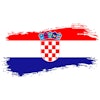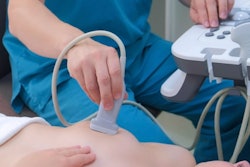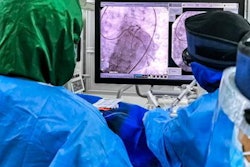Radiation exposure is generally low among interventional radiologists who perform stroke treatments, yet shows a wide range, underscoring that further work is needed to keep doses as low as possible, a German team has found.
A group led by neuroradiologist Dr. Charlotte Weyland of Heidelberg University Hospital reported that radiation doses among doctors performing endovascular stroke treatments were on average 7 µSV per intervention, but in some cases reached as high as 64 µSV.
"The radiation exposure is generally low but shows a wide range, which emphasizes the need for the interventionalist's awareness concerning radiation exposure to keep it as low as possible during neurointerventions," the group wrote. The study was published on 13 May in the European Journal of Radiology.
While patients are exposed the most during acute stroke imaging and endovascular stroke treatments (EST) such as thrombectomy, the ionizing radiation used also affects the neurointerventionalist. Although radiation shields and lead protection gear are obligatory for these doctors, radiation exposure due to beam scatter is still unavoidable for exposed body parts.
Weyland and colleagues sought to determine the doses doctors experience during EST at these areas and how their bodies are affected, particularly the left temple and left arm. They conducted a study that included 11 neurointerventionalists who performed 82 ESTs with a median fluoroscopy time of 30.2 minutes, measuring radiation doses with dosimeters clipped to the doctors. Recommended dose limit for doctors performing the procedures is 20 mSv annually.
The radiation exposure did not differ between the temple and arm, with a median of 7 µSV per procedure (1 mSv equals 1,000 uSV), but showed a wide range, with doses at the arm raging from a minimum of 0.3 µSV to a maximum of 64.5 µSV and at the temple from 0.38 µSV to 48.6 µSV.
The group found that the of the median number of ESTs performed by the 11 doctors in the study, the resulting calculated annual occupational dose (assuming an average of 7 µSV) stayed below the recommended dose limit.
With such a wide radiation exposure range -- due to the fluoroscopy procedure time and the number of contrast runs and thrombectomy attempts per procedure -- the investigators suggested that interventionalists need to raise their awareness concerning this exposure. They noted that the study did not analyze interventions that last longer than endovascular stroke treatments and that are associated with even higher radiation exposures.
"Further investigation is needed to define effective measures on how to reduce the occupational radiation exposure by direct feedback of the radiation exposure via live-dosimetry and the development of advanced protection shields," the group concluded.




















